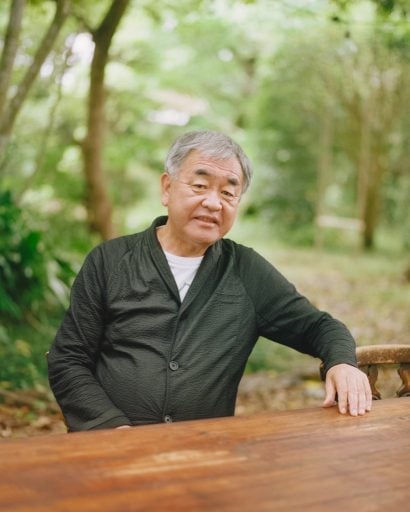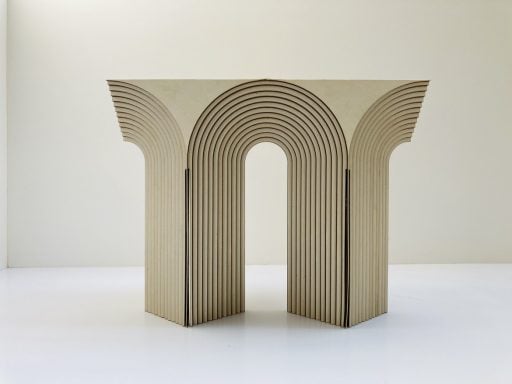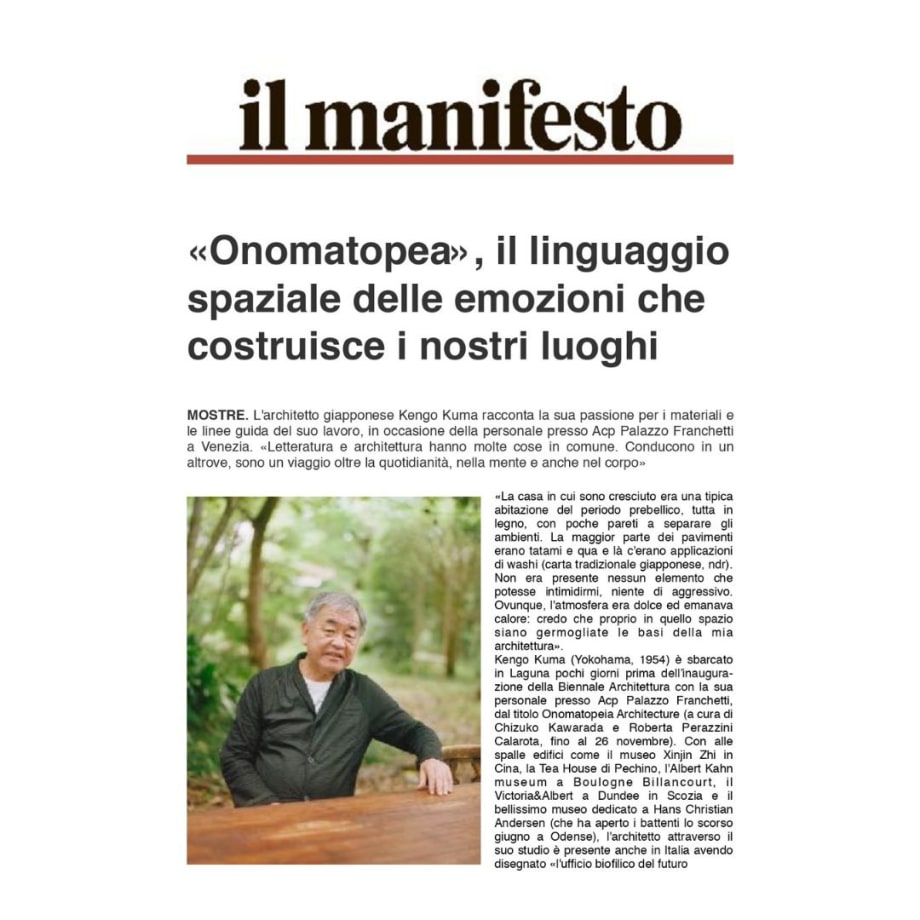THE JAPANESE ARCHITECt KENGO KUMA TALKS ABOUT HIS PASSION FOR MATERIALS AND GUIDELINES IN HIS work, ON THE OCCASION OF THE EXHIBITION AT PALAZZO FRANCHETTI IN VENICE.«LITERATURE AND ARCHITECTURE HAVE MANY THINGS IN COMMOn. THEY lead to an elsewhere, they are a journey beyond everyday life, in mind and body.»
«The house where I grew up was a traditional house of the pre-war period. All made of wood, with few walls to separate the different spaces. Most of the floors were tatami and here or there the use of washi (traditional Japanese paper, ed.). There was no element that could threaten me, nothing aggressive. Everywhere, the atmosphere was sweet and warm: I think that right in that place the basis of my architecture emerged».
Kengo Kuma (Yokohama, 1954) arrived in the Lagoon few days before the opening of the Biennale of Architecture with his exhibition at Acp Palazzo Franchetti, entitled Onomatopoeia Architecture (curated by Chizuko Kawarada and Roberta Perazzini Calarota, until november 26).
Having built structures such as the Xinjin Zhi museum in China, the Tea House in Beijing, the Albert Kahn Museum in Boulogne Billancourt, the Victoria&Albert in Dundee in Scotland and the beautiful museum dedicated to Hans Christian Andersen (that opened last June in Odense), the architect through his study designed in Italy «the biophilic building of the future» for Milan in the former area Rizzoli (it is expected to be completed in 2024).

Convinced that his mission is to explore the potential of materials, this «wood artist» consider himself as a dreamer whose aim is the freeing of human beings, «architects are healers with their projects», he said.
Therefore, «onomatopoeia is a perfect word, able to create a relationship between the human emotion and architecture - explains Kuma -. Climate issues can't be addressed only giving figures or finding numbers to identify some elements. I consider onomatopoeia as a useful tool to realise sustainable buildings and living environments. When I come to Venice, I feel closer to water as 'material' and I try to create a dialogue that doesn't use a language influenced by logic. Onomatopoeia makes body and material talk with each other , resonating with a primitive language».
Rhythmic, deeply sensorial, with sections that encourage to imaginary journeys in an evanescent elsewhere, the space interpreted by Kengo Kuma goes beyond the large-scale use of concrete (he graduated in the Seventies when that was the main language) to create many small «music» projects, with an ethereal structure.
«Before the spread of Modernism, natural materials played the important role of creating a relationship between humans and spaces, because those elements came from the same community. Suffice to think about the use of concrete, that was promoted worlwide as the quickest way to create buildings. But everything is changing once again: today it is essential that materials are produced locally, hoping that they are able to bring people together just by sharing the ground they have under their feet».

FOR KUMA, architectural and literary landscapes are alike, they have deep elective affinities, a liaison of loving senses. He described Andersen's fairytale and wild world by creating an immersive house («when I was a child, The Tinderbox was my favourite story, I couldn't stop reading it, I was anxious for the soldier's fate», he said) and gave an identity to the Haruki Murakami Library.
«I think that literature and architecture have many things in common; for example, they lead beyon the everyday life - both in mind and body, respectively. Reading novels can cut you out of real life - probably this is what people can experience in Murakami's books».

HOWEVER, something has changed and the post-pandemic world offers unforeseen challenges for architects. «Everything has definitely changed. We have entered a new era and there is no need to come back to the time before Covid. In fact, the pandemic has reversed the global trend where people aimed to build and then inhabit big congested cities, where to live. This no longer works and architects should propose a new existential style. It would be appropriate to do it in a concrete way, through their design of buildings or spaces».
